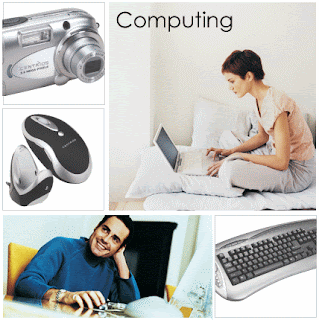
TEN STEPS TO PRACTICAL COMPUTING
Step 1: Know Your System
| The first preventive step you need to perform is to take an inventory of your computer system. This information will be vital if you later have to contact technical support or have your system serviced. Start by noting your serial number and model number. With this information, your system manufacturer can determine the components of your system. If you've added components to your system, note the model and version numbers of the components. You'll find this information in the documentation that accompanies add-on hardware. A definite must-have program to complete a system inventory is Belarc Advisor, a free program showing a detailed profile of your installed software and hardware, missing Microsoft hotfixes, anti-virus status, CIS (Center for Internet Security) benchmarks, and displays the results in your Web browser. |
Step 2. Make an Emergency Boot Disk
| If your computer develops a problem that keeps it from accessing your hard disk, you need some other way to boot your system. The answer is an emergency boot disk. Macintosh systems come with either a bootable CD-ROM or a bootable floppy disk, as does Norton Utilities for Macintosh -- a must for all Mac owners. If you are using Win95/98/ME, you need to make an emergency boot disk, which you can make with the Add/Remove Programs control panel. Select the Startup Disk tab, and you're led through the process. See Posting 100.07 to create a Disk for XP. Step 3: Tuneup Your Hard Disk Regularly
To defragment a Windows 95/98/ME/XP hard disk, use the Disk Defragmenter program in Programs/Accessories/System Tools. On a Mac, use a utility such as the Speed Disk tool that comes with Norton Utilities for the Macintosh. You should defrag your hard disk every six months. You should also defrag it after you have created or deleted a lot of files in a short span of time. Step 4: Store With a Plan You have lots of reasons to keep the files on your hard disk organized. First, it makes it easier to do "housecleaning" -- deleting files you no longer need. Second, keeping data files in their own well-labeled folders reduces the risk that you will inadvertently delete an important program or data file. Finally, a well-organized hard drive is easier and faster to back up.Create folders for each program and place only the appropriate data files in them. Alternately, create folders for each member of the family. Give files and folders names that will make sense even after you've forgotten why you created them. Step 5: Backup Your Data
Step 6: Keep Viruses at Bay Though the threat posed by computer viruses -- small software programs that can harm your programs and data -- is sometimes overblown in the popular press, it is still real. As the Internet has developed, so has the frequency of virus attacks and the ways they can infect a computer. Viruses can attack via email, via security breaches in the operating system, and other ways.Virus protection software works at many levels. It can scan every disk you put into your floppy drive and check every program for a hidden virus -- before you run the program. It can even scan all the files on your hard disk for viruses. With the viruses being sent via email nowadays, users should configure their virus utility to run when they start up their computer. Step 7: Stick with the Program
Never try to manually delete an application on a Windows system. Most applications make additions to system files when you install them, so it's best if the application has its own uninstall program. If an application doesn't come with an uninstall option, try the Windows 95/98/Me/XP Add/Remove Programs Control Panel. If the application doesn't support the Windows 95/98/Me/XP uninstall function, use a commercial utility such as Quarterdeck's CleanSweep 3.0 or MicroHelp's Uninstaller. As the Windows uninstall utility is not always reliable about removing all the pieces of an application, you may want to use one of the commercial utilities in all cases. They do a better job. Step 8: Keep Up-to-Date Software drivers let your applications talk to important peripherals. It's a good idea to check with your computer's manufacturer at least four times a year for the latest updates. The easiest way to do this is to access the manufacturer's Web site; most companies normally make updated drivers available for download. If you don't have Web access, call the vendor's tech-support number.You should keep your Windows based computer up-to-date via the Windows Update Service on the web. Step 9: Keep It Clean Dust can make the chips inside your computer run hotter and also clog cooling vents. At least once a year, unplug your computer, open the case, and blow out the dust. Do not wipe it with a rag; use either your breath or an aerosol can of compressed air.Your mouse and keyboard will also require occasional cleaning. You can pop off the key caps on your keyboard to get at dirt and hair between the keys. You can also remove your mouse ball to clean it and the rollers inside the mouse. Use a commercial spray cleanser applied to a cotton swab to clean your keyboard and mouse. Step 10: Shut Down Gracefully Windows 95/98/ME/XP, Windows 3.1, and the Mac OS all provide a menu-driven method to shut down your computer. Don't ignore these methods. Turning off power to your system while it is still running can be a disaster. Give your system the time it needs to flush caches, close files, and save configuration information before you pull the plug.To Turn off Windows 95/98/ME/XP computers, click on Start, Shut Down, and choose Shut Down and click OK. 100.06 |

No comments:
Post a Comment